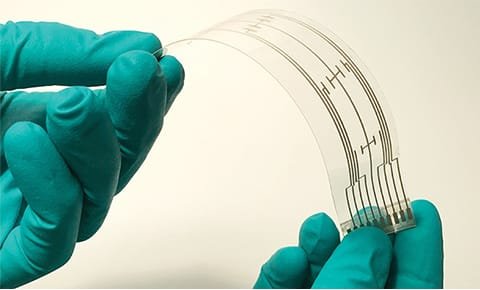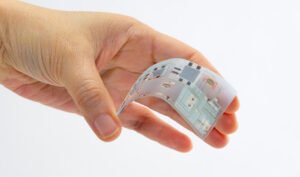At present, many intelligent detection equipment have adopted a large number of various sensors, and their applications have already penetrated into all aspects such as industrial production, ocean exploration, environmental protection, medical diagnosis, bioengineering, space development, smart homes, etc. As the application requirements in the information age become higher and higher, the expected values and ideal requirements for various performance parameters such as the range, accuracy and stability of the measured information are gradually increasing. In view of the measurement requirements of gas, pressure and humidity under special environments and special signals, new challenges are posed to ordinary sensors.
Facing more and more special signals and special environments, new sensor technology has developed towards the following trends: developing new materials, new processes and new sensors; realizing the integration and intelligence of sensors; realizing the integration of sensing technology hardware systems and elements. Miniaturization of devices; sensors that are cross-integrated with other disciplines. At the same time, it is hoped that the sensor can also be transparent, flexible, stretchable, freely bendable or even foldable, easy to carry, and wearable. With the development of flexible matrix materials, flexible sensors that meet the above-mentioned trend characteristics have emerged on this basis.
Characteristics And Classification Of Flexible Sensors
1.Characteristics Of Flexible Sensors
Flexible materials are a concept corresponding to rigid materials. Generally, flexible materials have properties such as softness, low modulus, and easy deformation. Common flexible materials include: polyvinyl alcohol (PVA), polyester (PET), polyimide (PI), polyethylene naphthalene glycol ester (PEN), paper, textile materials, etc.
Flexible sensors refer to sensors made of flexible materials, which have good flexibility, ductility, and can even be bent or folded freely. Their structures are flexible and diverse, and can be arranged arbitrarily according to the requirements of the measurement conditions, making it very convenient to measure. Complex measurands are tested. New flexible sensors are widely used in electronic skin, medical care, electronics, electrical engineering, sports equipment, textiles, aerospace, environmental monitoring and other fields.
2.Classification Of Flexible Sensors
There are many types of flexible sensors and their classification methods are also diverse.According to the classification of uses, flexible sensors include flexible pressure sensors, flexible gas sensors, flexible humidity sensors, flexible temperature sensors, flexible strain sensors, flexible magnetic impedance sensors and flexible thermal flow sensors;
According to the classification of sensing mechanism, flexible sensors include flexible resistive sensors, flexible capacitive sensors, flexible piezomagnetic sensors and flexible inductive sensors.

Common Materials For Flexible Sensors
1. Flexible Base
In order to meet the requirements of flexible electronic devices, properties such as thinness, transparency, good flexibility and stretchability, insulation and corrosion resistance have become key indicators of flexible substrates.
Among the many choices of flexible substrates, polydimethylsiloxane (PDMS) has become the first choice. Its advantages include convenience, chemical stability, transparency and good thermal stability. Especially under ultraviolet light, the distinct characteristics of the adhesion zone and the non-adhesion zone allow electronic materials to be easily adhered to the surface. Many flexible electronic devices achieve significant bending by reducing the thickness of the substrate; however, this approach is limited to nearly flat substrate surfaces. In contrast, stretchable electronics can fully adhere to complex and bumpy surfaces. Currently, there are usually two strategies to achieve stretchability in wearable sensors. The first approach is to directly bond thin conductive materials with low Young’s modulus onto flexible substrates. The second approach is to assemble the device using conductors that are inherently stretchable. It is usually prepared by mixing a conductive substance into an elastic matrix.
2. Metal Materials
Metal materials are generally conductor materials such as gold, silver, and copper, and are mainly used for electrodes and wires. For modern printing processes, conductive nano-inks are mostly used as conductive materials, including nanoparticles and nanowires. In addition to having good electrical conductivity, metal nanoparticles can also be sintered into films or wires.
3. Inorganic Semiconductor Materials
Inorganic semiconductor materials represented by ZnO and ZnS have shown broad application prospects in the field of wearable flexible electronic sensors due to their excellent piezoelectric properties.
A flexible pressure sensor based on direct conversion of mechanical energy into optical signals was developed. This matrix takes advantage of the mechanoluminescent properties of Zn S:Mn particles. The core of mesoluminescence is the emission of photons caused by the piezoelectric effect. The electronic energy band of piezoelectric Zn S produces a piezoelectric effect and tilts under pressure, which can promote the excitation of Mn2+, and the subsequent de-excitation process emits yellow light (around 580nm).
4. Organic Materials
Large-scale pressure sensor arrays are important for the future development of wearable sensors. Pressure sensors based on piezoresistive and capacitive signal mechanisms have signal crosstalk, leading to inaccurate measurements. This problem has become one of the biggest challenges in the development of wearable sensors.
Due to the perfect signal conversion and amplification performance of transistors, the use of transistors provides the possibility to reduce signal crosstalk. Therefore, much research in the fields of wearable sensors and artificial intelligence revolves around how to obtain large-scale flexible pressure-sensitive transistors.
A typical field effect transistor is composed of five parts: source, drain, gate, dielectric layer and semiconductor layer. According to the type of majority carriers, they can be divided into p-type (hole) field effect transistors and n-type (electron) field effect transistors.
The p-type polymer materials traditionally used in field-effect transistor research are mainly thiophene-based polymers, and the most successful example is the poly(3-hexylthiophene) (P3HT) system. Naphthalenetetraimide (NDI) and perylenetetraimide (PDI) show good n-type field effect properties and are the most widely studied n-type semiconductor materials. They are widely used in small molecule n-type field effect transistors. among.
Common transistor parameters include carrier mobility, operating voltage, and on/off current ratio. Compared with inorganic semiconductor structures, organic field-effect transistors (OFETs) have the advantages of high flexibility and low preparation cost, but they also have the disadvantages of low carrier mobility and high operating voltage.
5. Carbon Materials
Commonly used carbon materials for flexible wearable electronic sensors include carbon nanotubes and graphene. Carbon nanotubes have the characteristics of high crystallinity, good conductivity, large specific surface area, micropore size can be controlled through the synthesis process, and the specific surface utilization rate can reach 100%.






